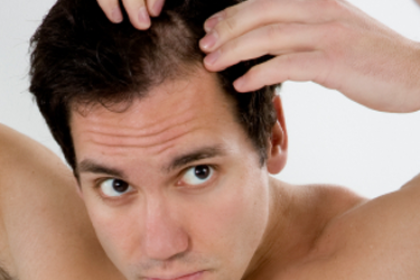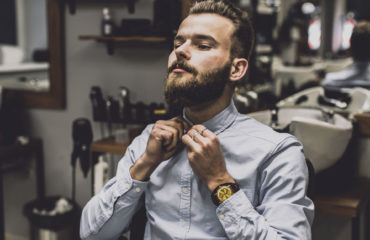Expert Advice for Men Suffering from Hair Loss

Androgenetic alopecia or male pattern baldness can be unpredictable. While baldness is associated with age, men can start experiencing thinning hair as early as their twenties. The American Hair Loss Association reports that by age thirty-five, two in every three American men will have started experiencing hair loss; and by the time they reach fifty, 85% of men would have significantly thinning hair.
While public perception about bald men has started to shift (recent studies reveal that people perceive bald men as more dominant, capable, and intelligent than men with thinning hair), the fact remains that not all could pull off a shaved head as well as Dwayne “The Rock” Johnson or Sir Patrick Stewart. Additionally, men just prefer to have a full head of hair than sport a bald head.
A survey in the United Kingdom revealed that 41% of men would rather be partially bald than entirely bald. Early studies also show that alopecia may result in psychological disorders, particularly anxiety and depression. It’s particularly true for men who suffer alopecia due to chemotherapy. Patients regard hair loss, whether partial or total, as one of the most traumatic effects of chemotherapy treatments.
For these reasons, men of all ages and backgrounds search for hair restoration solutions that could give them thick, healthy locks. It’s more than an aesthetic matter for men; it’s also for them to regain the confidence to face people and make themselves be seen and heard by others.
The Truth about Topical and Surgical Treatments
DIY hair-regrowth formulations and surgical hair restoration treatments are two types of hair loss solutions on opposite ends of the spectrum. One is topical and derived through popular deductions as to which substances could make hair grow faster and thicker, while the other has scientific roots and focuses not on slowing hair loss but promoting hair regrowth through hair follicle transplantation.
Pharmaceutical formulations for hair regrowth is another option. These topical and oral treatments which men can use discreetly in their homes. These products contain any of these solutions:
- Minoxidil 5%
- Minoxidil 2%
- Adenosine 0.75%
- Dutasteride 0.5 mg
- Finasteride 1 mg
These drugs promote hair growth by increasing blood flow to the hair follicles, stimulating the latter to grow long and thick. Comparative studies reveal that while dutasteride, finasteride, and minodoxil 2% and 5% have equal levels of effectiveness, patients are more pleased with the results of adenosine 0.75% because of the perceived speed in preventing hair loss and new hair regrowth.
All these treatments have one thing in common: there are no guarantees of positive outcomes nor equal levels of effectiveness for all those who use them. Even in surgical hair replacement, where surgeons remove hair follicles from a donor site (usually at the back of the head where hair grows the thickest) to the bare spots of the scalp, don’t offer a one hundred percent effectiveness guarantee. It could take months for the procedure to take effect fully.
Additionally, follicular unit transplantation may not have the desired effect men with advanced baldness as the procedure would distribute a reduced number of hair follicles over a wider expanse of the scalp. Lastly, studies suggest that hair regrowth drugs have undesirable side-effects, such as sexual dysfunction and a reduction in sperm count. What does this leave men who have no desire to go under the knife or spend thousands of dollars on topical treatments with uncertain results?
Old-School Remedy Refined by Technology
The last decade saw impressive innovations in non-surgical hair restoration solutions. These modern solutions take inspiration from the old-school toupee, which became popular in the 18th century. A toupee is an artificial hairpiece that goes over a bald spot on top of the head. Wearers would comb their hair over the front of the piece to conceal its edges and create a natural look.
Today, a man can go to a clinic and get fitted for a customized “hair replacement system” instead of getting a generic hairpiece. Hair systems are meticulously hand-crafted and use real human hair strands. They are designed to last for months; some systems can even go for three years before requiring a replacement. Men would have the liberty to choose the length and hairstyle, both of which they can change anytime they like.
There are four types of modern hair replacement systems classified according to the kind of material and structure of the base:
- Full-skin base
- Full-lace base
- Lace with polyurethane edge
- Skin with lace front
Skin-based hair systems may have bases made of silicon, polyurethane, or composites of both materials. Lace-based systems could use Swiss or French lace. Men may choose a system that works best on their skin type, skin color, and the extent of the bald spot they want to cover up.
Lace-Front Hair System
Fine lace is an ideal base for full hair systems because it is breathable and anchors hair strands without appearing or feeling bulky. Lace glues easily on the scalp and it only takes a stylist minutes to dye it in a color that matches the wearer’s skin tone. Lace-front hair systems look so natural that the lace hairline is indiscernible even upon close inspection.
Polyurethane-Based Hair System
Initial consultations for a polyurethane-based hair system involves a scalp examination wherein a specialist will determine which type of hair, color, and texture will suit the wearer best. The specialist will then “implant” hair strands on the polyurethane membrane as a hair transplant surgeon would, mimicking the natural hair growth pattern of the wearer.
Polyurethane offers several advantages. As a thin, colorless membrane, it is virtually invisible with edges that look like a natural hairline. The polyurethane membrane sticks on the scalp tightly like second skin. Men who wear these this type of hair system are free to do regular physical activities, even swimming. In fact, polyurethane-based hair systems would benefit from regular shampooing and conditioning.
Beyond Hair Restoration
Modern hair systems have been embraced by men all over the country. They restore not just hair lost but also the confidence and self-assurance that may have diminished as men experience various stages of pattern baldness.
There’s also evidence proving that hair restoration treatments can change how people regard men. Researchers from the John Hopkins University School of Medicine conducted a survey in December 2015 and found that many perceive men who’ve undergone hair restoration treatment as younger, successful, and approachable.
Given the variety of non-surgical hair restoration options, men no longer have to suffer baldness and the emotional and mental stress that comes with it. They could once again walk with their heads held high.
About the Author: Tony Smith
Tony Smith is the owner of Tony’s Hair Replacement Systems, in Columbia, South Carolina and has been an AHLC Member since 2014. Tony has dedicated his life to non-surgical hair replacement for men and women. Tony’s is a certified Virtual Reality and Virtuesse studio which provides innovative and viable non-surgical hair replacement solutions. Contact Tony and his team at tonyshrs.com
This article first appeared on the website for the American Hair Loss Council at https://www.ahlc.org.



This is very interesting.